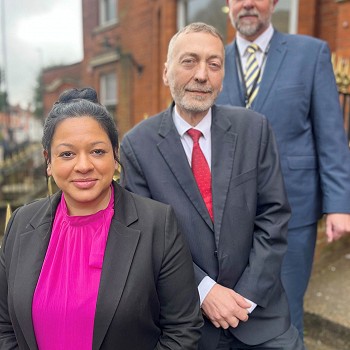- Home
- About
- Our People
- Business
-
Personal
- Wills and Trusts
- Conveyancing
- Divorce
- Child Contact
- Family Law
- Property Disputes (TOLATA)
- Criminal Law
- Civil Litigation
- Landlord and Tenant
- Inheritence Dispute
- Personal Injury
- Criminal Injury
- Road Traffic Law
- Adoption
- Consumer Rights
- Debt Recovery
- Family Mediation
- Injunctions
- Defamation
- Libel and Slander
- Domestic Abuse
- Join Us
- Pepptalk
- Pay Online
- Contact
Return to Pepptalk
Deputyships and Court of Protection
Let’s Talk Deputyship Applications
What happens when someone loses capacity to manage their own affairs, but they haven’t set up a Lasting Power of Attorney? When this happens, the person or people stepping in to manage the affairs of the person who has lost capacity (“P”) must instead apply to the Court of Protection for a Deputyship Order, granting them Court Ordered authority to manage P’s finances instead.
What’s the process for getting a Deputyship Order?
The process for applying for a Deputyship Order can seem daunting or difficult. However, it can be divided up into three clear stages.
The first stage is the “Information Collection Stage”, in which you collect all the information that you will need to submit to the Court to make your application in the first instance. This information includes the personal and financial details of P, the personal details of all proposed Deputies, and the exact wording of the Court Order that you would like to apply for. You will also need a medical report from a suitably qualified person who can confirm that P does not have the capacity to manage their own financial affairs. All this information is then submitted to the Court on their official forms, along with their processing fee. At the time of writing, the Court fee is £371.00.
The second stage is the “Notification Stage”. Once the Court have formally confirmed receipt of your application, they will ask you to notify P that the application is being made. The Court will also ask you to notify people who are close to P that you are applying to be P’s Deputy. This is a safeguarding measure put in place by the Court, to ensure that an application is not submitted for a person without them knowing about it. Once everyone is notified, you can submit confirmation of this to the Court on their official forms. Your application will then go into a queue to be seen by a Judge.
The third and final stage is the “Set Up” stage. Once your application is approved by a Judge, the Court will send you your final Order, granting you power to manage P’s financial affairs. The Court will expect you to set up a security bond to protect P’s assets. They will also ask you to report on P’s finances on an annual basis, as well as pay the Court’s annual administration fee to review your report. Finally, you will have to register the Deputyship Order with P’s various banks and building societies, so that they can grant you access to their accounts.
How long does it take for a Deputyship Order to come through?
In our experience, it can take between six to eight months for a Deputyship Order to come back from the Court. While the forms can be completed quickly, we are finding that there is a substantial backlog at the Court of Protection when it comes to dealing with applications, leading to these significant delays.
What is a COP1? How do I fill in a COP4?
Every one of the Court’s official forms has a code assigned to it, for ease of reference. For example, the form used to “Apply to make decision on someone’s behalf as a Deputy” is referred to as the COP1. The form titled “Make a report on someone’s capacity to make decisions” is called a COP3. While these codes can be confusing at first, these are the forms you use in the “Information Collection Stage” to write down all the information on, before submitting it to the Court.
Apply today to become part of #teampepps and take your career to the next level.
Please email your CV and covering letter to careers@pepperells.com.

Pepperells Limited, registered in England and Wales: No. 10244781 | Registered Office: 100 Alfred Gelder Street, Hull, East Yorkshire, HU1 2AE | Authorised & Regulated by The Solicitors Regulation Authority | Regulation Authority Numbers 636188, 638554, 638556, 647027, 636188, 807163, 818433, 8000373, 832782 and 830125. | www.sra.org.uk
Pepperells Solicitors are committed to ensuring that all Partners, Consultants and Employees give their full co-operation to the Legal Ombudsman in the event of any dispute or complaint against our firm, contact details of which can be found at www.legalombudsman.org.uk. VAT No. 365 0589 36

